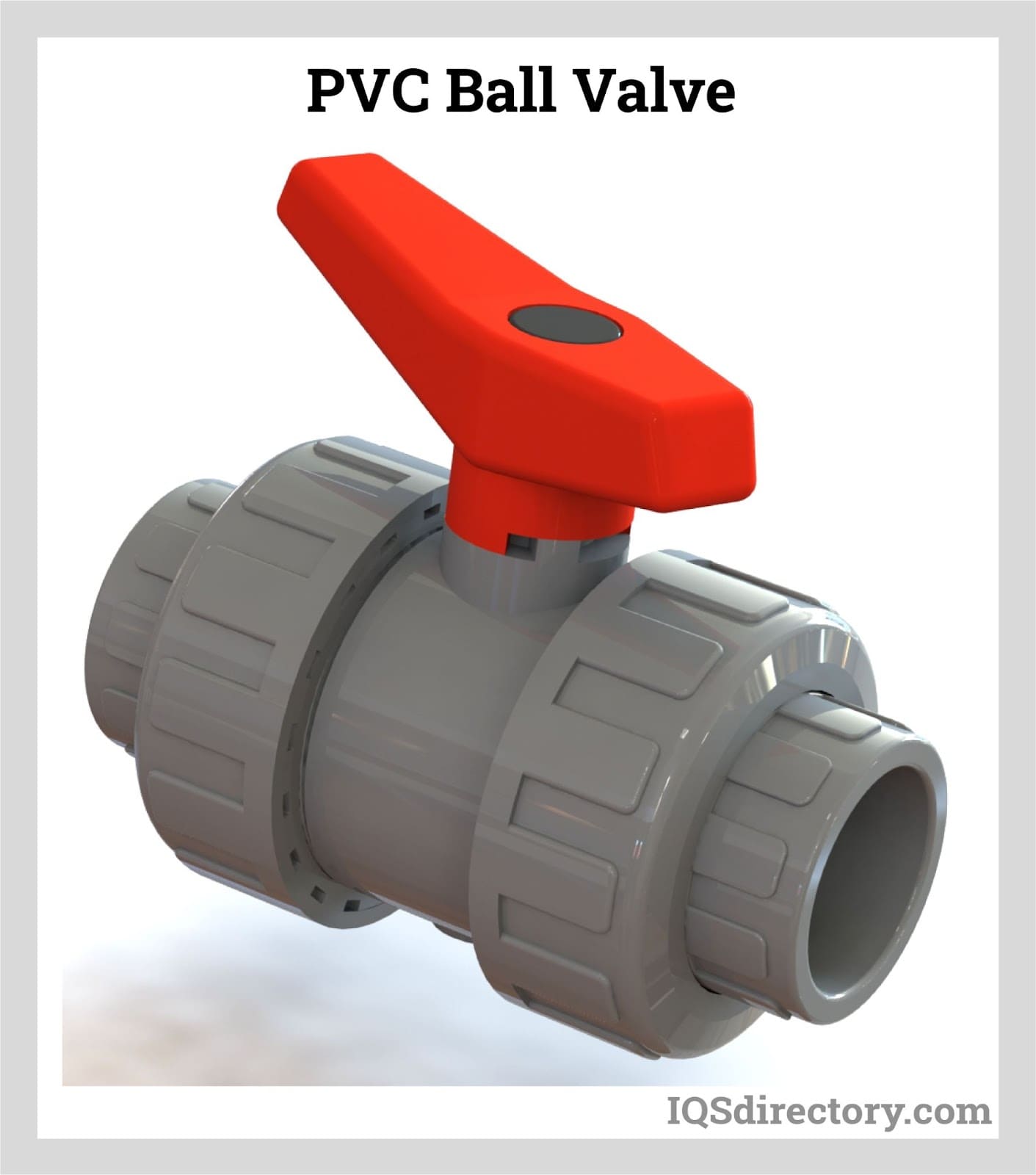If your ball valve is leaking at the handle, it could be due to a faulty seal or a damaged ball inside. This issue can cause water wastage and increase your utility bills.
So, it’s critical to address the problem promptly to avoid further damage and inconvenience. We’ll discuss the potential causes of a ball valve leaking at the handle and provide practical solutions to resolve the issue. Understanding the underlying reasons for this leakage and learning how to troubleshoot it will help you effectively manage and rectify the situation.
By following the steps outlined here, you can prevent water leakage and ensure the proper functioning of your ball valve.
Understanding The Issue
Ball valves are essential components in various plumbing and industrial systems, providing reliable control of fluid flow. However, a common issue that can arise is a leaking ball valve handle. Understanding the signs, visually inspecting the valve, and identifying the causes are crucial steps in addressing this problem.
Signs Of A Leaking Ball Valve Handle
Several indicators can point to a leaking ball valve handle, including:
- Drips or puddles of water around the handle
- Difficulty in turning the handle due to increased resistance
Visual Inspection
Conducting a visual inspection of the ball valve can offer valuable insights into the issue. Look for:
- Corrosion or rust around the handle or the valve body
- Wet spots or water stains on the valve or surrounding pipes
Identifying Common Causes
Leaking ball valve handles can be attributed to various factors, such as:
- Worn out or damaged seals
- Loose or damaged handle connections
- Internal damage or debris obstructing the valve mechanism
Diy Solutions For Sealing
When dealing with a ball valve leaking at the handle, finding a quick and effective solution is crucial. DIY solutions for sealing can help you address this issue without the need for professional assistance. Here, we’ll discuss some practical methods to seal a leaking ball valve handle on your own.
Tightening The Packing Nut
If you notice a leak at the valve handle, the packing nut may be the culprit. Tightening the packing nut can often resolve this issue. Here’s a step-by-step guide to help you through the process.
Step-by-step Guide
- First, identify the packing nut located just beneath the handle.
- Using an adjustable wrench, gently tighten the packing nut to compress the packing material around the stem.
- Ensure not to over-tighten as it may lead to difficulty in operating the valve.
- Check for leaks after tightening the nut. If the leak persists, consider further inspection or alternative solutions.
Safety Considerations
Always wear appropriate safety gear, such as gloves and eye protection, when working on a leaking valve. Turn off the main water supply before attempting any repairs to prevent accidents.
Replacing The Handle Or Stem
If tightening the packing nut does not resolve the leak, consider replacing the handle or stem. Different valve types may have specific requirements for replacing these components, so it’s important to identify the appropriate method for your valve. Some common considerations when replacing the handle or stem include the following:
Types Of Handles
Valves can have various types of handles, such as butterfly handles, lever handles, or T-handles. When replacing a handle, ensure it matches the specifications of the existing valve for proper operation.
Compatible Material Selection
When selecting replacement components, ensure compatibility with the existing valve material. This can help prevent issues such as corrosion or improper fit, which could lead to further leaks.
Utilizing Sealants And Lubricants
When it comes to addressing a ball valve leaking at the handle, utilizing sealants and lubricants is a crucial step in resolving the issue effectively. Proper application of sealants and lubricants not only helps in preventing leakage but also ensures the smooth functioning of the ball valve. Understanding the correct techniques, material compatibility, and the benefits of using sealants and lubricants is essential to maximize their effectiveness.
Applying Thread Seal Tape
Thread seal tape, also known as Teflon tape, is a commonly used sealant for preventing leaks in threaded plumbing connections. When applying thread seal tape to the ball valve, it’s vital to follow the proper technique to ensure a secure and effective seal.
- Start by wrapping the tape in the direction of the threads to avoid unwinding during installation.
- Apply firm pressure as you wrap the tape around the male threads, overlapping to cover the entire threaded area.
- Trim any excess tape to prevent it from protruding into the pipe and causing obstruction.
Proper Technique
Using the correct technique when applying thread seal tape is crucial to achieving a tight and leak-free seal. The threading should be clean and dry before applying the tape, and it’s essential to ensure that the tape is wrapped tightly and evenly around the threads.
Material Compatibility
Ensuring that the sealant and lubricant used are compatible with the material of the ball valve is essential to prevent any adverse chemical reactions. Always refer to the manufacturer’s guidelines to verify the compatibility of the sealant and lubricant with the valve material to avoid potential damage.
Using Teflon-based Lubricants
Utilizing Teflon-based lubricants can significantly improve the functionality of the ball valve, reducing friction and wear on the internal components. The benefits of using Teflon-based lubricants include:
- Reduced friction and wear.
- Enhanced sealing properties.
- Improved durability of the valve components.
Benefits
Applying sealants and lubricants to a ball valve not only addresses the issue of leaking at the handle but also prolongs the lifespan of the valve by minimizing wear and tear. Additionally, it ensures smooth operation and prevents potential damage caused by leaks.
Application Tips
- Always clean and dry the valve thoroughly before applying any sealant or lubricant.
- Refer to the manufacturer’s guidelines for recommended products and application methods.
- Ensure uniform and adequate coverage of the sealant or lubricant to achieve the desired results.
Professional Repair Options
When your ball valve is leaking at the handle, it can be a frustrating issue to deal with. While some minor leaks may be fixed with DIY methods, in certain cases, seeking professional repair options is the best way to ensure the problem is addressed correctly. In this section, we’ll explore the importance of professional assistance, when to consider it, and how to choose the right service provider for a lasting solution.
Seeking Professional Assistance
If you’ve attempted basic troubleshooting and the ball valve continues to leak at the handle, it may be time to seek the expertise of a professional. A professional plumber or valve repair specialist possesses the knowledge and tools necessary to diagnose the problem accurately and offer a comprehensive solution.
When To Consider Professional Help
Professional assistance should be considered when the ball valve leak is persistent, significant, or if multiple DIY attempts have failed to resolve the issue. Additionally, if the valve is part of a complex system or serves a critical function, it’s essential to involve a professional to prevent further damage or potential safety hazards.
Choosing The Right Service Provider
When selecting a service provider for ball valve repair, it’s important to research and choose a reputable and experienced professional. Look for qualifications, certifications, and customer reviews to ensure the provider possesses the necessary expertise to address the specific issue with the ball valve. Additionally, inquire about the warranty on the repair and the availability of emergency services, as these factors can provide added reassurance in the event of future issues.
Preventive Maintenance Tips
To prevent ball valve leaks at the handle, regular maintenance is key. Inspect, clean, and lubricate the valve to ensure it functions properly. Tighten any loose connections and replace worn-out parts to prevent potential leaks. Regular maintenance helps to maintain the integrity of the ball valve and prevent handle leaks.
Regular Inspection And Maintenance
Regular inspection and maintenance of ball valves can help mitigate the risk of leaks at the handle. This involves visually checking for any signs of corrosion, wear, or damage to the valve handle, stem, and packing gland. Routine inspections should be conducted to identify any potential issues early on, preventing more extensive damage and leakages.
Importance Of Proactive Care
Proactive care involves regularly lubricating the ball valve components and ensuring that the packing gland is correctly adjusted. This proactive approach can help maintain the functionality of the valve, preventing leaks and ensuring its longevity. Regular care and maintenance are crucial for preventing handle leaks and ensuring the efficient operation of the valve system.
Maintenance Schedule Recommendations
Establishing a maintenance schedule for ball valves is essential to prevent handle leaks and maintain overall system integrity. A recommended schedule includes quarterly visual inspections and the application of lubricants. Additionally, semi-annual and annual inspections should be conducted to check for any wear and tear, as well as to re-tighten any loose components.

Credit: www.dombor.com
Frequently Asked Questions Of Ball Valve Leaking At Handle
How Do You Stop A Ball Valve From Leaking?
To stop a ball valve from leaking, first, turn off the water supply. Next, tighten the valve’s packing nut. If the leak persists, replace the valve’s gasket or O-ring. If the leak continues, consider replacing the entire ball valve to ensure proper sealing.
Regular maintenance can prevent future leaks.
Can You Tighten The Packing On A Ball Valve?
Yes, you can tighten the packing on a ball valve to fix leaks and ensure proper functioning. Use a wrench to tighten the packing nut until the leaking stops, but be careful not to over-tighten, as it can damage the valve.
Regular maintenance is important to keep the valve in good condition.
How Do You Replace A Ball Valve Handle?
To replace a ball valve handle, turn off the water supply, remove the old handle and replace it with a new one. Ensure it is securely fastened. Test for leaks before turning the water supply back on.
What Are The Common Problems With Ball Valve?
Common problems with ball valves include leaking, corrosion, and handle failure. Additionally, buildup of debris can affect performance. Regular maintenance can prevent issues.
Conclusion
Addressing a leaking ball valve at the handle is crucial for preventing water damage and ensuring efficient water flow. By following the troubleshooting steps and considering professional repair if needed, you can effectively resolve this issue. Taking prompt action will help maintain the functionality and longevity of your plumbing system.

